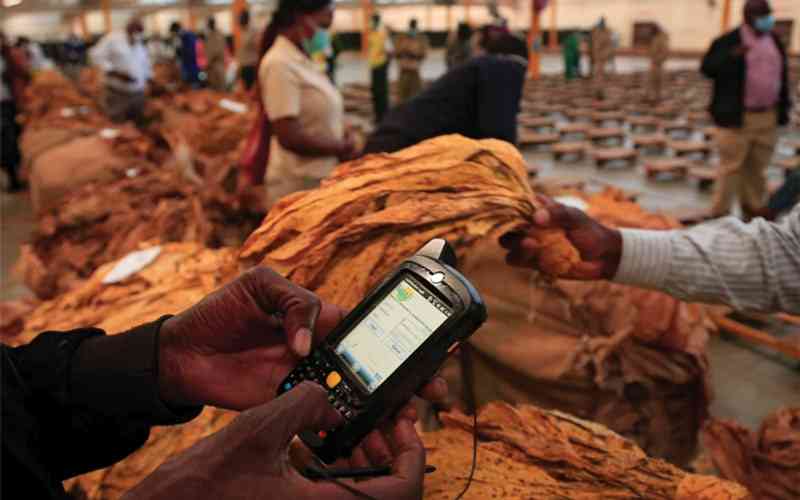
CIGARETTE manufacturer, Cavendish Lloyd Zimbabwe (CLZ) is planning to have two more auction sales of its newly — introduced tobacco crop, shisha, as it seeks to tap into the growing domestic and foreign markets for the end product.
Cavendish is part of the United Arab Emirates-based cigarette manufacturer Cavendish Lloyd Group (CLG). It designs, produces and sells cigarettes.
However, due to the growing use of shisha in social settings, CLZ became the first company to have an auction sale of this variety of tobacco.
In an interview with NewsDay Farming, Cavendish chief executive officer and founder Koen Monkau said they had seen shisha grow in popularity over the years in Zimbabwe.
“This tobacco has extremely low nicotine. So, our target with the farmers is to grow a maximum nicotine crop of 1% while the traditional crop that you see is traditionally anywhere between 2% and 3% with sugars ranging from, let’s say, 14% to 20%. This is less than 1% nicotine and up to 30% sugar,” he said.
“We are going to do three or four (auction sales) in total and this is number two.”
However, he added that shisha was no different from ordinary cigarettes.
On its first day of selling shisha at the tobacco auction floors, Cavendish sold between 60 and 80 bales with each bale weighing between 90 and 100 kilogrammes.
- COP27: UAE and Egypt agree to build one of world's biggest wind farms
- COP27: A glass half full
- Zim’s Rugby Ref of the Year Pazani reflects on “amazing” year
- Raza strikes IPL gold
Keep Reading
On the second day on April 21, the sales rose to 300 bales.
Cavendish is working with approximately 13 farmers who are its main suppliers of the crop.
The growing cycle for this plant is up to six months, according to Monkau.
“The cost of growing is about half that of the traditional crop. If you look at a commercial farmer in Zimbabwe, the cost of growing per hectare of the traditional tobacco is anything between US$12 000 and US$13 000 and this (shisha) is about US$6 000 to US$7 000, so it is about half the cost of growing. However, the yield per hectare is slightly less,” Monkau said.
“So, when you look at the return on investment for the farmer, it’s definitely much better than the traditional crop.”
He said a conservative estimate of the return on investment based on the company paying US$5 per kilogramme to farmers of shisha would be between a 30% and 40% margin.
While China is the biggest buyer of Zimbabwe’s tobacco, Cavendish is targeting the European and Arab markets with the final product.
“The original source of this style of tobacco is Europe, but from there it’s sold worldwide. So, we are basically competing with countries such as France, Poland and Germany.These are the major producers of this style of tobacco in Europe. And we see that there is stabilisation or a slight decline in what they are growing for whatever reasons, so that means there is an opening for us to enter that market as well,” Monkau said.
“For the last two seasons, there has been a shortage of this style of tobacco. Traditionally, most of this tobacco is being used in the Middle East because that is where most shisha is coming from. But what we see now even in Africa or Zimbabwe, recently a small manufacturer started to make a small product that is going into the water pipe.”






